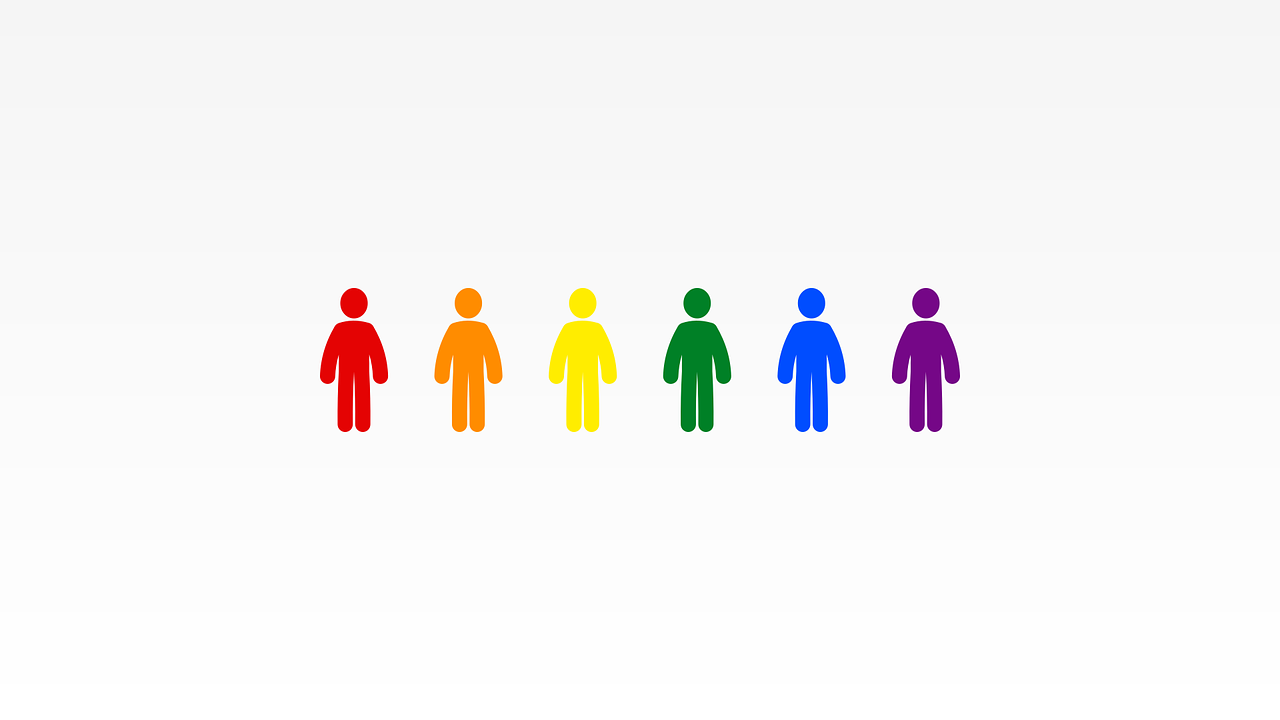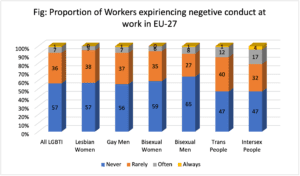Promoting LGBTQI+ Safety Initiatives: Creating an Inclusive Work Environment

16-05-2023
In recent years, there has been a growing recognition of the importance of fostering a safe and inclusive work environment for individuals of diverse sexual orientations and gender identities. LGBTQI+ employees face unique challenges in the workplace, ranging from discrimination and harassment to a lack of understanding and support.

Source: FRA, EU LGBTI 2 Survey (2019)
To address these issues, many organizations are implementing LGBTQI+ safety initiatives. Let’s explore the significance of such initiatives and discuss effective strategies for promoting LGBTQI+ safety at work.
The Importance of LGBTQI+ Safety Initiatives:
LGBTQI+ safety programs are essential for developing an environment at work where everyone feels valued, respected, and free from prejudice. These programs help to boost employee satisfaction, productivity, and overall organizational success while also promoting diversity. Companies may promote a culture that welcomes equality and diversity by acknowledging and addressing the unique issues experienced by LGBTQI+ people.
Building a Foundation – Policy and Training:
A strong foundation for LGBTQI+ safety initiatives begin with the development and implementation of inclusive policies. These policies should explicitly prohibit discrimination based on sexual orientation and gender identity, establish reporting mechanisms for incidents, and provide guidelines for handling complaints. Additionally, comprehensive training programs can help educate employees about LGBTQI+ issues, raise awareness, and promote understanding and acceptance. For Instance: In order to better understand the prevalence of musculoskeletal diseases (MSDs) and the associated physical, psychosocial, individual, and organizational risk factors in three distinct worker groups—women, migrants, and LGBTI workers—the EU-OSHA project Preventing musculoskeletal disorders in a diverse workforce was conducted. The Fundamental Rights Agency (FRA) conducted its first online survey of lesbian, homosexual, bisexual, and transgender people in 2012. It gathered data from 93,079 adults (18 years of age or older) living in the EU and Croatia, which was not yet an EU Member State. The Fundamental Rights Agency (FRA) conducted its second online survey of individuals who identify as homosexual, gay, bisexual, transgender, or intersex in 2019. Respondents who were 15 years of age or older and who resided in the EU28, North Macedonia, or Serbia were eligible for the poll. The poll has 139,799 participants in total. The data in this study supports the claim that LGBTI employees face disproportionately high levels of psychosocial and organizational hazards at work, which have a detrimental effect on their mental health and perceived state of health. Although there are still areas for development and workplaces may undoubtedly play a significant role, a supportive legal and legislative framework can protect and enhance the occupational health of LGBTI workers.
Establishing Safe Spaces:
Another successful LGBTQI+ safety measure is to create safe spaces at work. Safe spaces can be actual places where people can feel at ease and respected, like gender-neutral restrooms or resource centres specifically for LGBTQI+ people. Additionally, online chat rooms and forums offer employees a chance to network, exchange experiences, and get support from other like-minded people.
Employee Resource Groups (ERGs):
Employee Resource Groups with a focus on LGBTQI+ employees can be extremely effective in fostering a culture of safety and inclusion. These organizations offer a venue for networking, mentoring, and campaigning. ERGs can plan seminars, commemorate LGBTQI+ achievements, and collaborate closely with management to address issues and suggest changes to improve workplace inclusivity. Creating an LGBTQ+ network can be a fantastic strategy to help staff for expanding SMEs. A network enables LGBTQ+ workers to connect with one another at work in a secure environment. Members of the network can serve as a focus group to assist you discover and address problems affecting LGBTQ+ workers so you can constantly refine your strategy. The Global Diversity List has several excellent instances of networks.
Reviewing Benefits and Policies:
To make sure they are welcoming of LGBTQI+ employees, organizations should periodically examine their perks and policies. This includes expanding healthcare coverage to cover treatments and pharmaceuticals for transgender people, granting parental leave to LGBTQI+ couples, and gender-neutralizing grooming and dress standards. These actions show a commitment to equality and assist in removing obstacles experienced by LGBTQI+ people. Furthermore, it should come as no surprise that many of the greatest and most prosperous businesses in the world have sophisticated diversification policies that include LGBT inclusion. In fact, approximately 90% of Fortune 500 businesses forbid discrimination on the basis of sexual orientation and gender identity, and nearly 60% of them provide benefits to the same-sex spouses of their employees.
Allies and Advocacy:
Allies inside the organization must take a proactive role in promoting LGBTQI+ safety initiatives. To better understand LGBTQI+ concerns and assist their LGBTQI+ colleagues, allies might take training. They can campaign for LGBTQI+ rights, refute heteronormative presumptions, and promote an inclusive culture by using their status and influence.
Hence, Initiatives to promote LGBTQI+ safety are essential to creating a diverse and inclusive workplace. Organizations may foster an environment where LGBTQI+ employees can flourish by putting policies, training programs, safe spaces, ERGs, and benefit reviews into place. Equally crucial are enlisting supporters and promoting an accepting culture. Organizations that prioritize the safety of LGBTQI+ people preserve fundamental human rights while also using diversity’s ability to spur creativity, productivity, and success.
